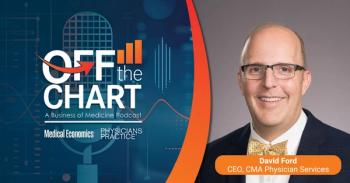
Medicaid Expansion: Can Bolstering Nonphysician Staff Help?
Physician practices must prepare for more patients. One not-so-new idea that has merit is hiring more nonphysician providers.
The expansion of Medicaid per the Affordable Care Act means the demand for primary care services is only going to get steeper. Yet whether or not they’re in a state that has decided to expand Medicaid (and especially if they are) physician practices need to be prepared to accommodate more patients.
However, primary-care docs are in ever-short supply. The Association of American Medical Colleges predicts a worsening shortage of primary-care physicians, noted
One of the not-so-new ideas for accommodating the Medicaid patient influx is hiring more nonphysician providers, such as nurse practitioners (NPs) and physician assistants (PAs).
Nonphysician providers can help physicians improve care by increasing collaboration, family physician Reid Blackwelder, president-elect of the American Academy of Family Physicians, told Physicians Practice.
“The reality [is] to meet patient needs now is not going to be fulfilled by any one group whether it’s physicians, nurse practitioners, or PAs,” said Blackwelder. “However, what will be critical is using a team-based care approach.”
In Blackwelder’s practice, the physician relies on a doctor of pharmacy, and a team of his residents, who work with medical residents to coordinate together as a team.
“This allows me to focus on what I’m trained to do - take care of diagnoses, taking care of the plan - because I don’t have to spend some of my time reconciling medication. There are other team members who are trained to do that. That really is the goal of moving [things] in the direction of team-based care.”
John McGinnity, the American Academy of Physician Assistants’ (AAPA) president elect, said PAs are going to be especially important over the next ten years because they’re growing in numbers, and thus, easier to find and hire. McGinnity cited a recent
“My role as a PA is to make my doc’s life a little bit easier every day, and make sure our patients are getting quality, cost-efficient care,” McGinnity told Physicians Practice. “We all know there’s going to be an influx of massive amounts of patients that aren’t currently covered. We know [the government is] going to expand the Medicaid population and these folks are going to need care. [PAs] have seen an exponential growth since the 1990s. We’re now seeing another push because of market demands in the community. Somebody’s got to fill this void of … physician shortages in primary care.”
Teri Bunker, a nurse practitioner who heads her own medical practice, Bridge City Family Medical Clinic, in Portland, Ore., says she has a hard time finding physicians to supplement her staff, though Oregon doesn’t require physicians to supervise/oversee practices. But managing to serve an expanding Medicaid population (her practice is currently 70 percent Medicaid) will be a challenge.
“Nurse practitioners are much more readily available and can do the same amount of stuff,” Bunker told Physicians Practice. “Nurse practitioners can be cost-effective. We do tend to have longer appointment times with our patients … in specialty practices it can save a lot of money. Physicians are not going into primary care, whereas 80 to 90 percent of nurse practitioners are.”
Newsletter
Optimize your practice with the Physicians Practice newsletter, offering management pearls, leadership tips, and business strategies tailored for practice administrators and physicians of any specialty.













